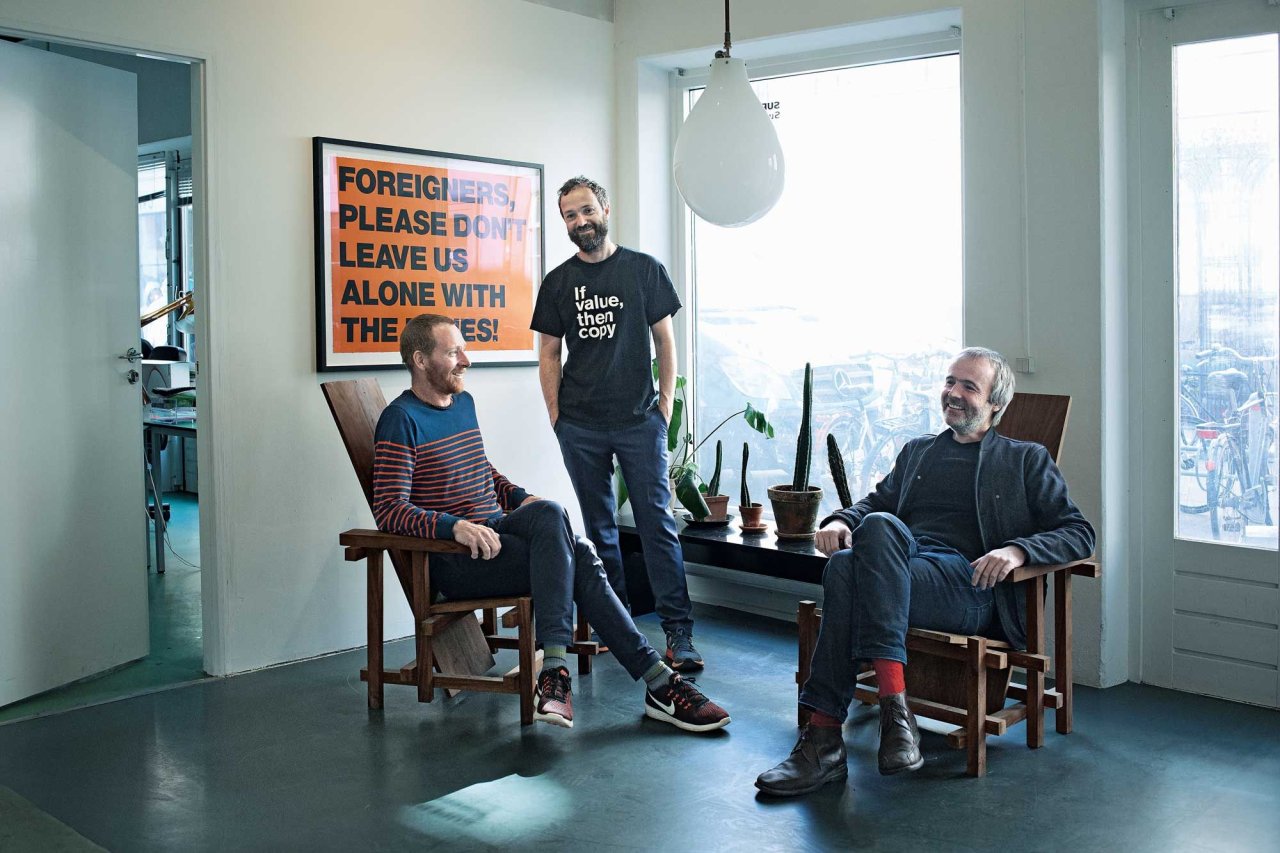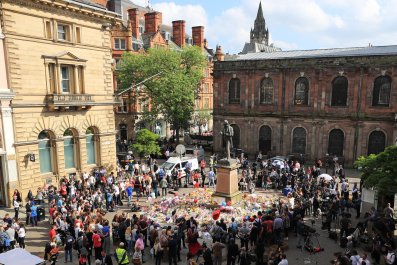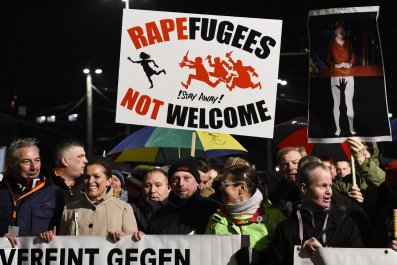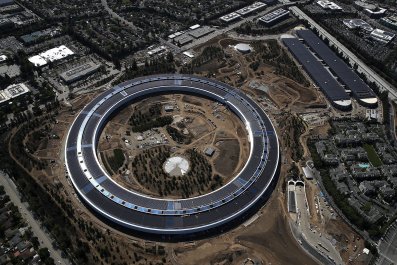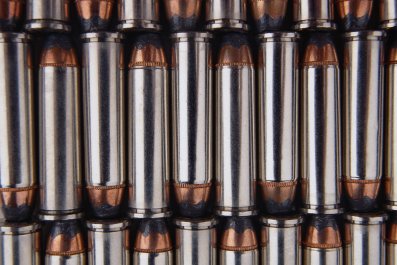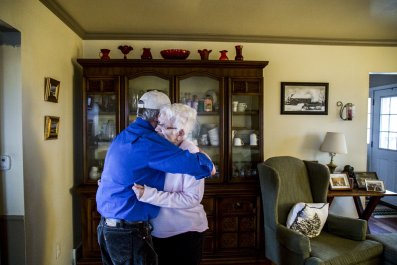Sitting around the white Ikea-like desk in their studio, on the ground floor of a low-key office building in the gentrified northern part of Copenhagen, the core members of the Danish art group Superflex seem far less confrontational than you might expect. From their bases in Copenhagen, Stockholm and London, Jakob Fenger, Bjørnstjerne Christiansen and Rasmus Nielsen have been working together for 25 years on politically charged projects that have taken them everywhere from Texas to Africa, via Bangkok, Japan and many of the world's most prestigious art galleries. This year sees their most high-profile commission to date, with the recent announcement that they are the latest artists invited to fill the vast Turbine Hall of London's Tate Modern. Yet, despite the glamorous-sounding projects and their globe-trotting lifestyle, the three men, all in their 40s, appear surprisingly grounded, dressed in casual clothes, with a beard here, some gray hair there and plenty of lines around the eyes.
Talking about their provocative work—which has included such pieces as an exact replica of the toilets used by the U.N. Security Council in New York, erected on a beach in the Netherlands in 2010, and a video installation, made in 2009, that attempted to hypnotize viewers so that they might perceive climate change from the perspective of a cockroach—they are serious, patient and have a clear sense of their approach. Intent on challenging globalization and power structures, they call their works "tools," suggesting a broader application beyond art.
Though their mission is pugnacious, playfulness is central to the Superflex worldview. "Humor is just one of the buttons you can press. It's very effective. It's also challenging. It's not just fun," says Nielsen. The collective's work questions economic systems and the commodification of art, but the artists also highlight the comedy innate in everyday life. They call 1970s Danish children's television a main source of inspiration, and their works are more likely to be experiences rather than objects. "We want to do things that have an impact," Christiansen says. "Understanding the systems and the game of the realities that we choose to participate in is crucial. Let's say it's important to smash things before you can move on."
This June, at the ARoS Triennial in Denmark, Superflex is unveiling an outdoor piece called Investment Bank Flower Pots. It will be a roughly 8-foot-tall white sculptural replica of the Deutsche Bank headquarters in Frankfurt, Germany, filled with psychoactive plants that will grow throughout the exhibition's run. Fenger says the objective is to compare the highs and lows of drug use to the unreality of "this whole investment circus." A series of works representing other investment banks will be exhibited internationally throughout this year in spaces including the 21st Century Museum of Contemporary Art in Kanasawa, Japan, and the outlet shopping city of Metzingen, Germany. "Hopefully, one day we will bring them together, so they become a small city of investment bank buildings," muses Fenger.
Superflex's work has, at times, gotten the artists into trouble. The first lawsuit against them was in the 1990s, when the Danish lighting company Louis Poulsen accused them of reworking one of its iconic (and expensive) designs without permission, "modifying" the classic Ph5 lamp to run on biogas amid the unlikely and electricity-free surroundings of a simple hut in Asia. Surprised by the cease-and-desist letters, they became interested in copyright restrictions and the role of brands and capital in limiting creative engagement with logos, concepts and products. In the 2008 film project Flooded McDonald's, their best-known work to date, a (facsimile) McDonald's fast-food joint slowly floods with water until all the plastic, all the furniture, all the branded everything is floating in a muddy soup, a statement on globalization, climate change and consumption. McDonald's didn't sue, but the clothing company Lacoste and soft drink maker Guaraná Antarctica later took action over other projects. As Fenger notes, "You put yourself in the fire, and sometimes it fires back."
Perhaps ironically, given how much their work would go on to subvert the corporate world, the members of Superflex consciously founded the group as a kind of business itself. Back in 1993, in the middle of an economic boom, when the culture was questioning globalization and capitalism, the trio even made research appointments with other corporate organizations to see how they communicated, what their offices looked like and how employees dressed. They devised their company name on a boat trip to Sweden. "The name of the boat was SuperFlex Bravo, and everybody was dressed in the same orange jumpsuits. We thought that was exciting, so we took that name," Christiansen recalls. "If you Google 'Superflex,' quite a lot of things come up. We would get these letters from people who want us to fix a roof or tarmac a street. We were really charmed by that kind of attention."
Despite the inherent sense of critique of corporate structures, Superflex still believes in the benefits of the collective relationship. "It's been a very long marriage," Fenger explains drily. The three founders all studied at the Royal Danish Academy of Art and have now worked together for a quarter century, at times living together in Bangkok and Africa. As for their working methods, Christiansen says that "people think it's difficult to work three people as one identity. [But] we have spent a tremendous amount of time together. Our communication happens really speedily. We can decide things quite fast."
The artists meet regularly with notebooks and pencils to conceive their work, which often plays with the idea of freedom. Their Superchannel project, which began in 2000, explored the possibilities of free internet TV way before YouTube, broadcasting from a gallery in Liverpool, England. In Japan and Norway, they took over corner stores and turned them into free shops to see how shoppers would react when they discovered the 100 percent discount at checkout. "Men aged between 50 and 60 would be furious, throwing the money on the floor, shouting. Other people would react completely differently, becoming extremely happy and crying because they got all their groceries for free," Fenger recalls.
For now, they are tight-lipped about their largest installation to date: a commission for the cathedral-like Turbine Hall at Tate Modern to be unveiled in October. It is one of the most expansive and high-profile installation spaces an artist can take on, where Superflex will follow in the footsteps of famous artists including Ai Weiwei, Louise Bourgeois, Philippe Parreno and Olafur Eliasson.
Superflex's subversive nature has made the collective a popular choice in the U.K. Announcing the commission, Frances Morris, director of Tate Modern, said she was delighted to welcome the group to the world's most visited modern art museum. "Their work raises timely questions about the role of the artist in contemporary society, exploring how we interpret and engage with the increasingly complex world around us. I can't wait to see how they tackle these themes within the unique scale and public context of Tate Modern's Turbine Hall," she noted.
Precisely what form these "timely questions" will take remains to be seen, and naturally the artists aren't giving too much away at this early stage. One thing is clear, however: Superflex's playful and provocative work—already celebrated by the art-world cognoscenti—is about to become much more widely known. "I think they expect 6 million or so visitors in six months," Nielsen says. "You have between 20,000 and 30,000 people in the exhibition hall daily. It's like having to organize a World Cup football match every day!"



